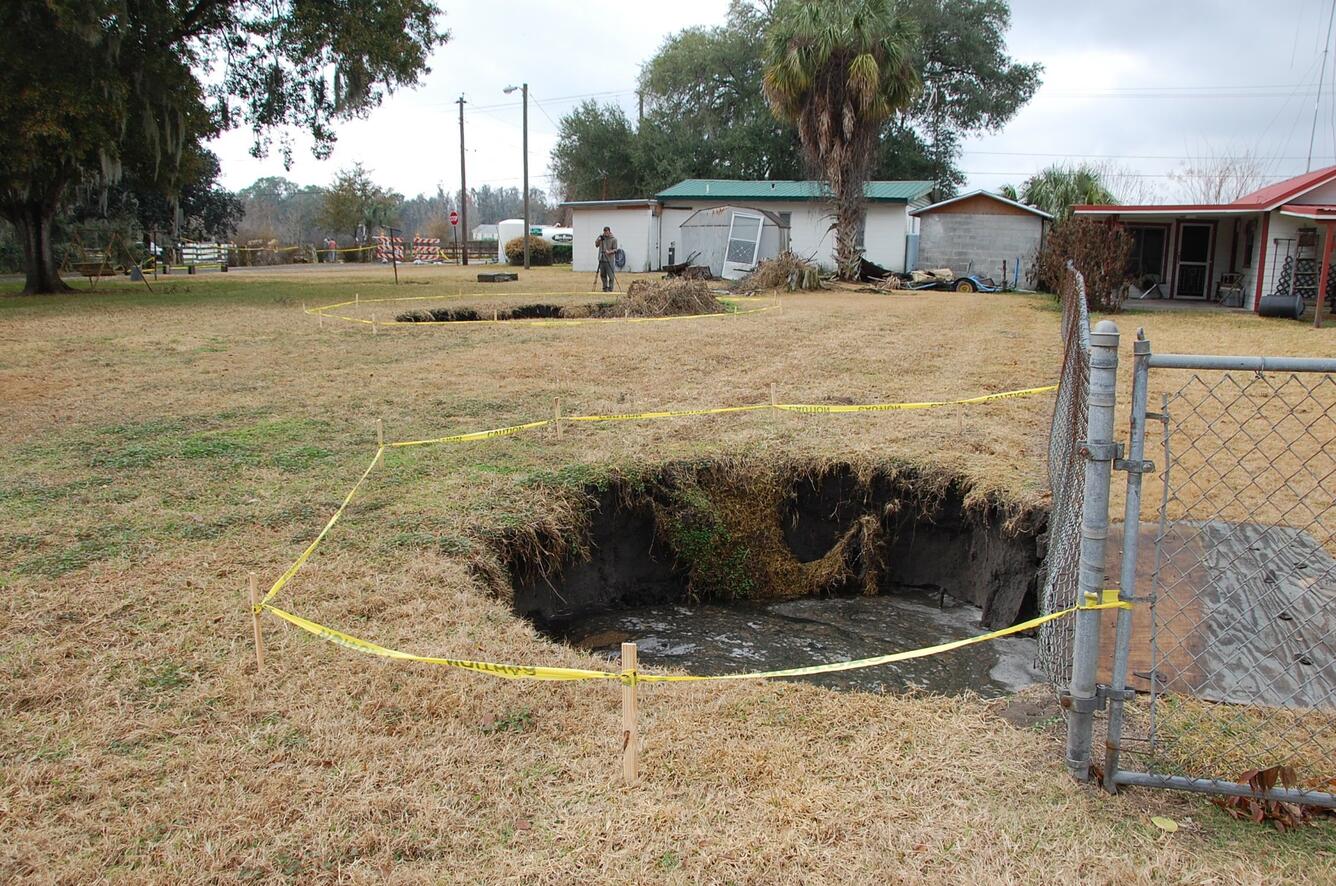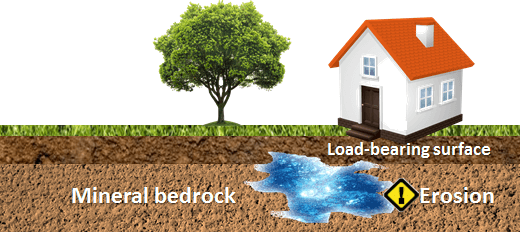Yes, sinkholes are real and they can happen just about anywhere. No, they’re not an automatic reason to panic, even if you live in a sinkhole-prone area. Not all sinkholes make the evening news, but they’re more common than you might think. Here are some interesting things worth knowing about them:
- They occur naturally as a result of normal geological processes
- They can be triggered, enlarged or accelerated by human activity
- They can range in size anywhere from a few inches to several miles across
- They are common in Texas, Alabama, Kentucky, Tennessee and Missouri and especially Florida
- The worlds biggest natural sinkhole is in Egypt and is over 70 miles wide and 80 miles deep
- The most infamous sinkholes have swallowed whole buildings almost instantly
- The good news is there are visible signs of sinkhole trouble and your home can be protected
The sudden and catastrophic sinkholes we hear about, like the one that took the life of a Florida man when his bedroom disappeared into the ground below, are known by geologists as the ”cover/collapse” type. That’s the variety we’re looking into here, but there are other, less destructive kinds that cause much more gentle and gradual surface changes.
What Are Sinkholes?
A “cover/collapse” sinkhole forms when water dissolves limestone or similar kinds of mineral bedrock. The water gradually creates an underground cave with a thin layer of surface material above it. As
erosion continues over time the formation can no longer support the ground above and – whoosh – it all goes down in an instant. In 2010 a formation like this in Guatemala was aggravated by a badly degraded sewer system and a whole factory disappeared into a chasm that was 60 feet across and 30 stories deep.
Can Sinkholes Be Predicted or Prevented?
Natural sinkholes happen all the time and there’s no way to know in advance where the next one’s going to form. According to one CNN report, in Florida alone there were nearly 25,000 sinkhole-related insurance claims from 2006 to 2010, with an estimated value of $1.4 billion.
No homeowner likes to imagine ending the work day by pulling up to a deep, jagged crater where their house used to be. Even if you do happen to live in a sinkhole-prone region like Florida, the ”Discovery Channel” sized ones are relatively rare and there are some practical steps you can take to protect your home. Here are seven sinkhole indicators to watch out for:
- Has there been a significant change in water demand where you live?
- Is there local development activity that would cause vibration or impact water levels?
- Are sewers and water mains in good condition or are there potential leaks in the area?
- Does your foundation (or your neighbor’s) show signs of mold or mildew?
- Are cracks appearing in walls, floors or bathroom tiles?
- Have you noticed alignment problems around doors and windows?
- Are there any unexplained low spots or unusual erosion on or near your property?
Sometimes these things are just a minor nuisance that require nothing more than a quick cosmetic repair, but they can also be early indicators of sinkhole damage. If signs like this are showing up, don’t panic, but DO seek out a qualified inspector with the tools and experience to do a complete investigation. In most cases, property damage can be prevented by timely repairs like compaction grouting or other remedial measures that help stabilize the surrounding soil and get your home back on solid ground again.
Schedule a free assessment today for any of these Florida cities:
- Orlando foundation repair
- Tampa foundation repair
- Gainesville foundation repair
- Williston
- Jacksonville
- Ocala
- Palatka
- Lake City
- Kissimmee
- St Petersburg
- Sarasota
- Palm Bay
- And many more! Contact us today


